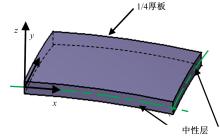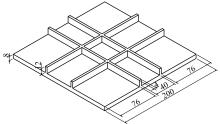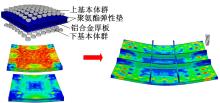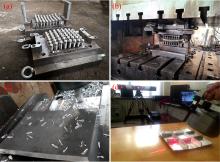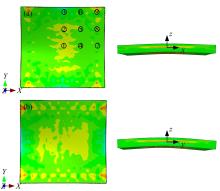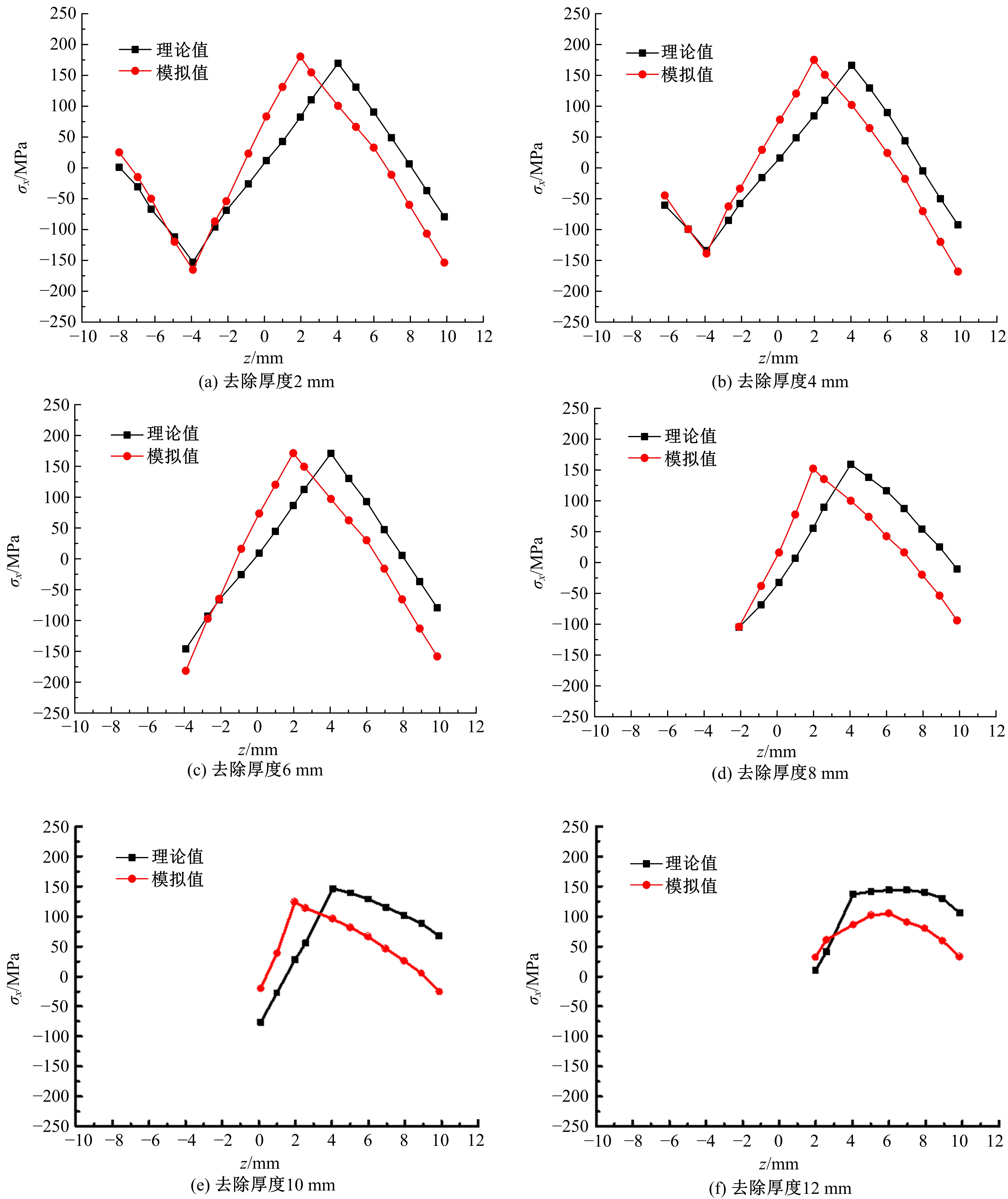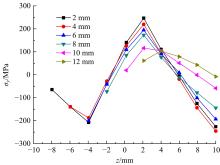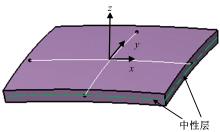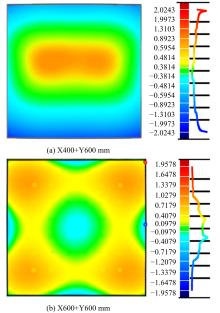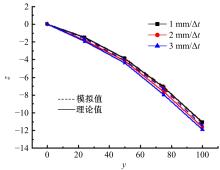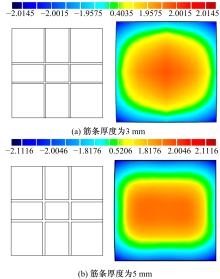Journal of Jilin University(Engineering and Technology Edition) ›› 2021, Vol. 51 ›› Issue (1): 188-199.doi: 10.13229/j.cnki.jdxbgxb20190169
Springback prediction for double-curvature stiffened panel during milling
Chun-guo LIU1,2( ),Xiao-tong YU1,2,Tao YUE1,2,Dong-lai LI1,2,Ming-zhe ZHANG1,2
),Xiao-tong YU1,2,Tao YUE1,2,Dong-lai LI1,2,Ming-zhe ZHANG1,2
- 1.Roll-forging Research Institute,Jilin University,Changchun 130022,China
2.College of Materials Science and Engineering,Jilin University,Changchun 130022,China
CLC Number:
- TG386
| 1 | 曾元松, 黄遐. 大型整体壁板成形技术[J]. 航空学报, 2008, 29(3): 721-727. |
| Zeng Yuan-song, Huang Xia. Forming technologies of large integral panel[J]. Acta Aeronautica Et Astronautica Sinica, 2008, 29(3): 721-727. | |
| 2 | 董亚男. 铝合金整体板多点冲压成形断裂的预测与控制[D]. 长春:吉林大学材料科学与工程学院, 2016. |
| Dong Ya-nan. Prediction and control of fracture in multi-point press forming of aluminum alloy integral panel[D]. Changchun: College of Materials Science and Engineering, Jilin University, 2016. | |
| 3 | 刘纯国, 岳韬, 邓玉山, 等. 一种高筋铝合金壁板制造方法[P]. 中国: 201610634093, 2016-10-26. |
| 4 | Rossini N S, Dassisti M, Benyounis K Y, et al. Methods of measuring residual stresses in components[J]. Materials & Design, 2012, 35(1): 572-588. |
| 5 | Sebastiani M, Eberl C, Bemporad E, et al. Focused ion beam four-slot milling for poisson's ratio and residual stress evaluation at the micron scale[J]. Surface and Coatings Technology, 2014(251): 151-161. |
| 6 | Liu C G, Zheng Y, Zhang X G. Investigation of through thickness residual stress distribution and springback in bent AL plate by slotting method[J]. The International Journal of Advanced Manufacturing Technology, 2017, 90(1-4): 299-308. |
| 7 | Meng L, Atli M, He N. Measurement of equivalent residual stresses generated by milling and corresponding deformation prediction[J]. Precision Engineering, 2017, 50: 160-170. |
| 8 | Shin S H. Prediction of the dimensional instability resulting from machining of residually stressed components[D]. Lubbock:Texas Tech University, 1995. |
| 9 | Wang S, Zuo D, Wang M, et al. Modified layer removal method for measurement of residual stress distribution in thick pre-stretched aluminum plate[J]. Transactions of Nanjing University of Aeronautics & Astronautics, 2004, 21(4): 286-290. |
| 10 | Sebastian N. A mathematical model for the estimation of the effects of residual stresses in aluminum plates[D]. City of Saint Louis: Washington University in St. Louis, 2005. |
| 11 | Yong K A. Machining-induced residual stress and distortion of thin parts[D]. City of Saint Louis: Washington University in St. Louis, 2005. |
| 12 | Wu Q, Li D P, Ren L, et al. Detecting milling deformation in 7075 aluminum alloy thin-walled plates using finite difference method[J]. The International Journal of Advanced Manufacturing Technology, 2016, 85(5-8): 1291-1302. |
| 13 | Wei Y, Wang X W. Computer simulation and experimental study of machining deflection due to original residual stress of aerospace thin-walled parts[J]. The International Journal of Advanced Manufacturing Technology, 2007, 33(3/4): 260-265. |
| 14 | Tang Z T, Yu T, Xu L Q, et al. Machining deformation prediction for frame components considering multifactor coupling effects[J]. The International Journal of Advanced Manufacturing Technology, 2013, 68(1-4): 187-196. |
| 15 | Izamshah R, Mo J P T, Ding S. Hybrid deflection prediction on machining thin-wall monolithic aerospace components[J]. Proceedings of the Institution of Mechanical Engineers, Part B: Journal of Engineering Manufacture, 2012, 226(4): 592-605. |
| 16 | 孙杰, 柯映林. 残余应力对航空整体结构件加工变形的影响分析[J]. 机械工程学报, 2005, 41(2): 117-122. |
| Sun Jie, Ke Ying-lin. Study on machining distortion of unitization airframe due to residual stress[J]. Chinese Journal of Mechanical Engineering, 2005, 41(2): 117-122. | |
| 17 | Li W, Ma L, Wan M, et al. Modeling and simulation of machining distortion of pre-bent aluminum alloy plate[J]. Journal of Materials Processing Technology, 2018, 258: 189-199. |
| 18 | Gao H, Zhang Y, Wu Q, et al. Investigation on influences of initial residual stress on thin-walled part machining deformation based on a semi-analytical model[J]. Journal of Materials Processing Technology, 2018, 262: 437-448. |
| 19 | 余同希, 章亮炽. 塑性弯曲理论及其应用[M]. 北京: 科学出版社, 1992. |
| 20 | Adibi H, Asadian Ardakani M H, Mollaei Dariani B. Springback analysis of sheet metal laminates after U-bending[C]∥The 19th International Conference on Metallurgy and Materials, Roznov pod Radhostem, Czech Republic, 2010. |
| 21 | 林胜. HSM在航空制造业中的应用[J].航空制造技术, 2003(3): 25-28, 76. |
| Lin Sheng. HSM application in aviation manufacturing industry [J]. Aeronautical Manufacturing Technology, 2003(3): 25-28, 76. | |
| 22 | Li B, Jiang X, Yang J, et al. Effects of depth of cut on the redistribution of residual stress and distortion during the milling of thin-walled part[J]. Journal of Materials Processing Technology, 2015, 216: 223-233. |
| [1] | Jin⁃zhong LU,Wan⁃ting ZHOU,Sheng⁃yang ZHANG,Yi⁃kai SHAO,Chang⁃yu WANG,Kai⁃yu LUO. Effect of coverage layer on corrosion resistance of 6061⁃T6 aluminum alloy subjected to laser shock peening [J]. Journal of Jilin University(Engineering and Technology Edition), 2019, 49(3): 842-849. |
| [2] | LIU Zi-wu, LI Jian-feng. Erosion damage and evaluation of remanufacturing cladding layer for impeller metals FV520B [J]. 吉林大学学报(工学版), 2018, 48(3): 835-844. |
| [3] | LIU Yu, LI Peng-fei, ZHANG Yi-min. Analysis and prediction of micro milling deformation of copper thin-wall parts [J]. 吉林大学学报(工学版), 2017, 47(3): 844-849. |
| [4] | LIANG Ji-cai, LI Yi, GAO Song, TENG Fei. Springback prediction for multi-point 3D stretch bending profile [J]. 吉林大学学报(工学版), 2017, 47(1): 185-190. |
| [5] | ZHUANG Ye, CHEN Yu-hang, YANG Ye-hai, XU Shu-fang. Twin-tube hydraulic shock absorber F-V modeling based on structure parameters [J]. 吉林大学学报(工学版), 2016, 46(3): 732-736. |
| [6] | MA Yao, DONG Xiao-long, LI Ze-jun, SHEN Lin, ZHAO Hong-wei. Finite element simulation of the effect of different initial contact on nano-indentation [J]. 吉林大学学报(工学版), 2014, 44(5): 1366-1370. |
| [7] | PENG Yong, SUN Li-jun. Numerical simulation of effect of horizontal aggregate distribution in asphalt mixtures on splitting test [J]. 吉林大学学报(工学版), 2013, 43(04): 891-896. |
| [8] | WANG Yong-hua, ZHANG Cheng-chun, WANG Jing, SHI Lei, ZHANG Xue-peng, REN Lu-quan. Analysis of sound-absorbing performance of bionic porous material [J]. , 2012, (06): 1442-1447. |
| [9] | YAN Qing-dong, CUI Hong-wei, WEI Wei. Finite element analysis of blade wheel strength in hydrodynamic tractor-retarder assembly under traction condition [J]. 吉林大学学报(工学版), 2012, 42(02): 365-371. |
| [10] | MIAO Hong, ZUO Dun-wen, WANG Min, ZHANG Rui-hong, WANG Hong-feng. Effect of technological parameters on quality of Q460 high-strength-steel internal thread formed by cold extrusion [J]. 吉林大学学报(工学版), 2012, 42(01): 68-73. |
| [11] | KONG De-jun, ZHOU Chao-zheng, HU Ai-ping. Effect of laser shock on the mechanical properties of weld joint of X70 steel pipeline [J]. 吉林大学学报(工学版), 2011, 41(05): 1507-1512. |
| [12] | ZHANG Jin-Le, MA Biao, ZHANG Ying-Feng, LI He-Yan. Simulation of thermal characteristic of wet shift clutch [J]. 吉林大学学报(工学版), 2011, 41(02): 321-0326. |
| [13] | SHI Yong-Jiu, YANG Lu, WANG Yuan-Qing, LI Qiu-Zhe. Bending stiffness of composite slim beam with deep deck [J]. 吉林大学学报(工学版), 2010, 40(06): 1550-1555. |
| [14] | LI Jie, QIN Yu-Ying, ZHAO Qi. Modelling and simulation of fullvehicle random vibration [J]. 吉林大学学报(工学版), 2010, 40(02): 316-0319. |
| [15] | LUO Kai-Yu, LU Jin-Zhong, YIN Chun-Jing, ZHONG Jun-Wei, YAO Hui-Xue, ZHANG Yong-Kang. Properties of LY2 alloy film by laser shock processing [J]. 吉林大学学报(工学版), 2010, 40(02): 467-0470. |
|
||
